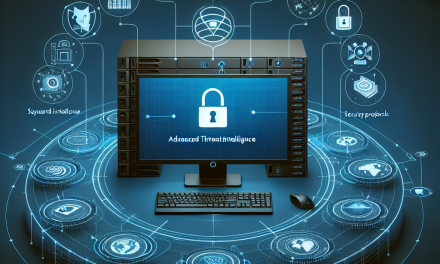In today’s digital landscape, ensuring robust security for your IT infrastructure is more critical than ever. As cyber threats continue to evolve, organizations must adopt comprehensive security strategies. Windows Server offers a variety of advanced endpoint protection features that can significantly improve your organization’s security posture. In this article, we will explore key strategies to maximize security using Windows Server.
Understanding the Risks
Before implementing any security strategies, it’s essential to recognize the potential threats to your Windows Server environment. Common risks include:
- Malware: Viruses, ransomware, and spyware can compromise sensitive data.
- Unauthorized Access: Weak passwords and lack of multi-factor authentication can lead to breaches.
- Data Loss: Accidental deletion or corruption of data can disrupt operations.
- Phishing Attacks: Social engineering tactics can trick employees and lead to data exposure.
Advanced Endpoint Protection Strategies
1. Implement Windows Defender Advanced Threat Protection (ATP)
Windows Defender ATP is a cloud-based solution that provides advanced security against malware and other attacks. It combines machine learning, heuristic analysis, and behavior-based detection to identify threats in real-time.
Benefits:
- Continuous monitoring of endpoints.
- Detection of suspicious activities.
- Automated response to potential threats.
2. Use Group Policy for Security Configurations
Group Policy allows administrators to enforce security settings across multiple users and devices. By centrally managing security policies, organizations can minimize the risk of human error and ensure compliance with security protocols.
Implementation Tips:
- Regularly review and update Group Policy Objects (GPOs).
- Use Security Configuration Wizard (SCW) to create security policies based on server roles.
3. Enable BitLocker Drive Encryption
BitLocker is a robust encryption feature that protects data at rest. By encrypting the entire disk, organizations can prevent unauthorized access to sensitive data, especially in the event of loss or theft of hardware.
Best Practices:
- Use Group Policy to enforce BitLocker encryption across all endpoints.
- Regularly back up recovery keys and store them in a secure location.
4. Leverage Windows Firewall and Advanced Security
Windows Firewall provides a first line of defense against unauthorized access. By configuring advanced firewall settings, organizations can control the flow of network traffic and restrict access to sensitive resources.
Configuration Suggestions:
- Create inbound and outbound rules based on the principle of least privilege.
- Regularly monitor firewall logs to identify unusual traffic patterns.
5. Utilize Security Auditing and Logging
Windows Server’s auditing capabilities allow administrators to track actions taken on the system. By enabling security auditing, organizations can monitor user activities, detect anomalies, and gather forensic data in the event of a breach.
Action Items:
- Configure auditing settings through Local Security Policy.
- Use PowerShell scripts for advanced logging and reporting.
6. Regularly Update and Patch Systems
Keeping all software and systems up to date is crucial for vulnerability management. Windows Server provides features like Windows Update and WSUS (Windows Server Update Services) to manage updates effectively.
Schedule:
- Establish a maintenance window for regular updates.
- Use automated tools for patch management to ensure all systems are current.
7. Educate Employees on Security Best Practices
Human error is often the weakest link in cybersecurity. Regular training and awareness programs can empower employees to recognize and respond to potential threats effectively.
Focus Areas:
- Phishing awareness and identification.
- Safe browsing habits and secure data handling.
8. Implement Multi-Factor Authentication (MFA)
MFA adds an extra layer of security by requiring users to verify their identity through multiple means. It significantly reduces the likelihood of unauthorized access due to compromised credentials.
Deployment Steps:
- Enable MFA for all administrative accounts.
- Encourage the use of authentication apps for enhanced security.
9. Consider Third-Party Security Solutions
While Windows Server offers a solid foundation for security, third-party security solutions can provide additional layers of protection. Consider tools for endpoint detection and response (EDR), intrusion detection systems (IDS), and security information and event management (SIEM) solutions for a more comprehensive security strategy.
Conclusion
Maximizing security in a Windows Server environment involves a multi-faceted approach. By implementing advanced endpoint protection strategies, organizations can safeguard their data, enhance compliance, and mitigate risks in today’s evolving threat landscape. As cyber threats continue to evolve, staying proactive and vigilant in your security practices will ensure a robust and secure infrastructure.
About WafaTech
WafaTech is committed to providing insightful technology information and solutions to help organizations navigate the ever-changing IT landscape. Stay tuned for more articles and resources on maximizing security and enhancing performance in your technological environment!





